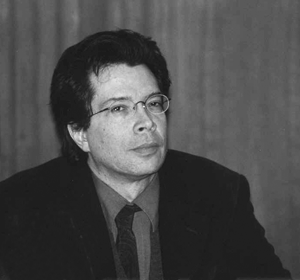by Stephen Sartarelli

For Nanni Cagnone, the verbal gesture does not evoke or represent the object of expression. It makes it. The making — poeisis — originates beyond the tools we are handed down, the words we speak. Vessel to vessel, the poem strives to birth a living thing, “the abandoned infinite form.” Each attempt at expression, each stab at the light, yields a new piece of matter, shadowed through the poet’s gaze for the time it takes to splinter and darken again, in the new light of the reader’s eyes. And into this spiral fall as one the many meanings of our words and gestures, in an eternal incandescence of “the missing superabundance.” Beyond language, then, lies the materia prima of creation: essence, form in its original sense. Unknowable because there is nothing to know in it. It is, in fact, preknowledge: pure, unfallen. Before words. The poet — Nanni Cagnone — stands on the other side, after words. Between the two lies the possible poem. Across the burning distance the poet enacts the ritual of making, beckons the poem from wordlessness. Yet no message or meaning is given; rather, a thing is made manifest, brought into the light, enable to seek, to await meaning, like oracular utterance.
‘There in the middle, where all is consumed, / words might well not speak [...].’ The act of the poem is thus a return — to the wellsprings of language and being, of thought, desire and memory. Throughout a solitary career that has seen him forever distilling the medium of his search, Cagnone has been “going back”, to forge the novelty that is his ancient vision and voice. In The Book of Giving Back, revisiting his native Liguria through personal and ancestral memory, between echoes of the ruined ages and their voices, the poet plumbs the silence beyond the grief of loss and makes a gift of its elusiveness. The poem is an act of restitution, “a far cry from going back; / closer, perhaps, to its sorrow.” It is a form-giving gesture in the face of the void, yet another in a lifetime spent looking deep into the “shadows within the phrase.” And it fills the void with the very thing that defies the words to which the poet harkens. By such efforts is a world evinced, through a breach in the limits of matter and mind. And by such faith, perhaps we, too, may share in its silent riches.